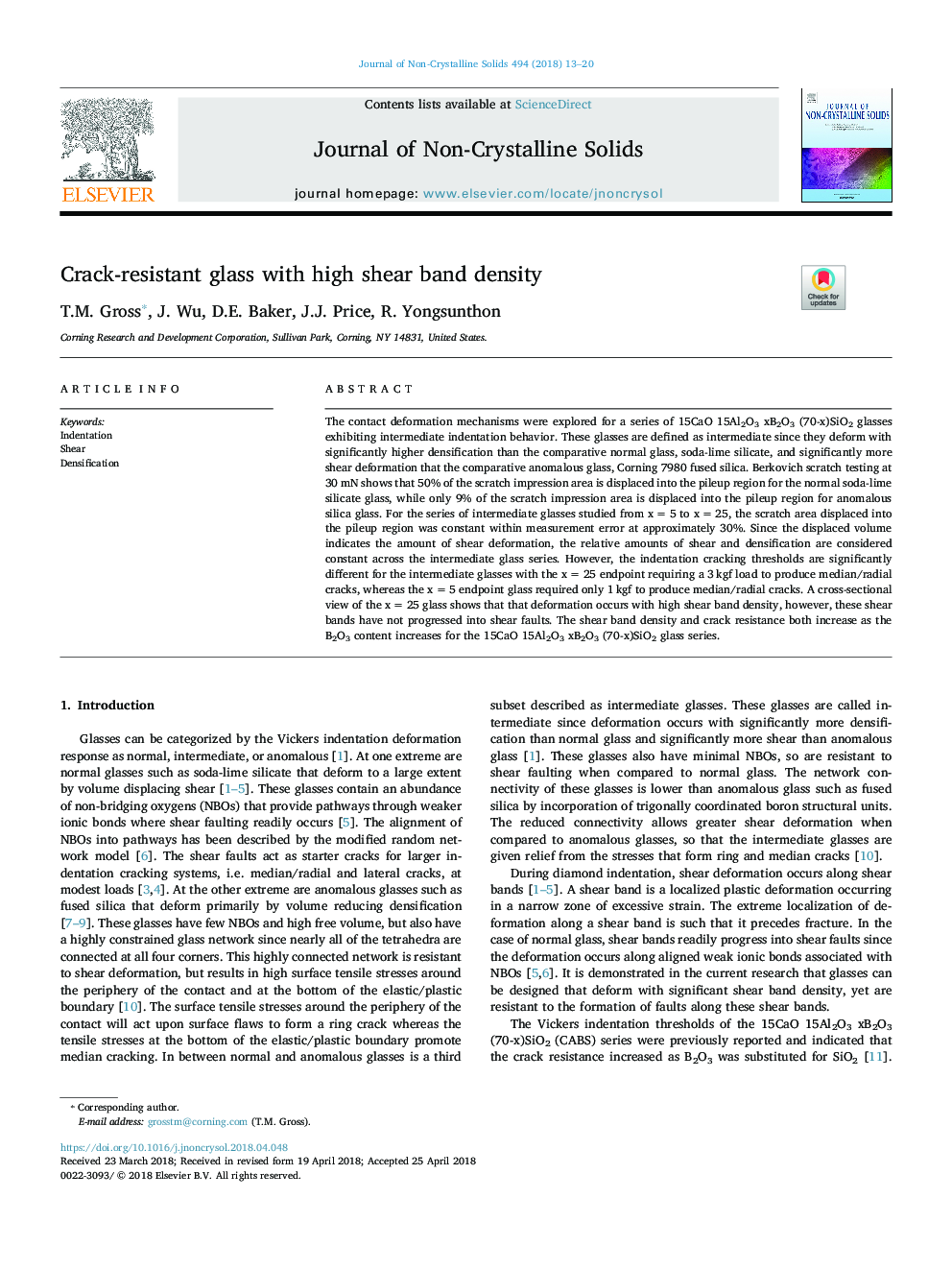| Article ID | Journal | Published Year | Pages | File Type |
|---|---|---|---|---|
| 7899701 | Journal of Non-Crystalline Solids | 2018 | 8 Pages |
Abstract
The contact deformation mechanisms were explored for a series of 15CaO 15Al2O3 xB2O3 (70-x)SiO2 glasses exhibiting intermediate indentation behavior. These glasses are defined as intermediate since they deform with significantly higher densification than the comparative normal glass, soda-lime silicate, and significantly more shear deformation that the comparative anomalous glass, Corning 7980 fused silica. Berkovich scratch testing at 30 mN shows that 50% of the scratch impression area is displaced into the pileup region for the normal soda-lime silicate glass, while only 9% of the scratch impression area is displaced into the pileup region for anomalous silica glass. For the series of intermediate glasses studied from xâ¯=â¯5 to xâ¯=â¯25, the scratch area displaced into the pileup region was constant within measurement error at approximately 30%. Since the displaced volume indicates the amount of shear deformation, the relative amounts of shear and densification are considered constant across the intermediate glass series. However, the indentation cracking thresholds are significantly different for the intermediate glasses with the xâ¯=â¯25 endpoint requiring a 3â¯kgf load to produce median/radial cracks, whereas the xâ¯=â¯5 endpoint glass required only 1â¯kgf to produce median/radial cracks. A cross-sectional view of the xâ¯=â¯25 glass shows that that deformation occurs with high shear band density, however, these shear bands have not progressed into shear faults. The shear band density and crack resistance both increase as the B2O3 content increases for the 15CaO 15Al2O3 xB2O3 (70-x)SiO2 glass series.
Keywords
Related Topics
Physical Sciences and Engineering
Materials Science
Ceramics and Composites
Authors
T.M. Gross, J. Wu, D.E. Baker, J.J. Price, R. Yongsunthon,
